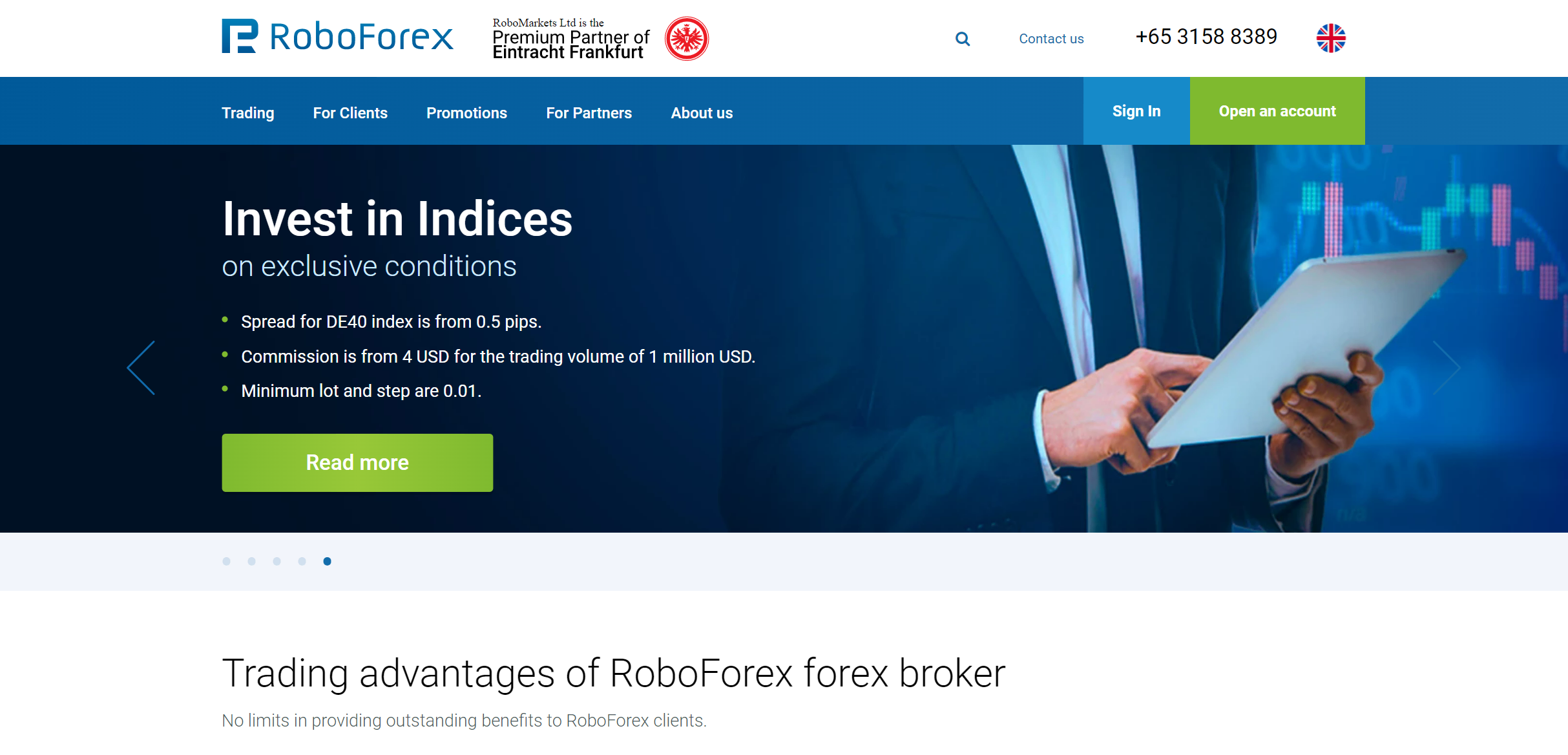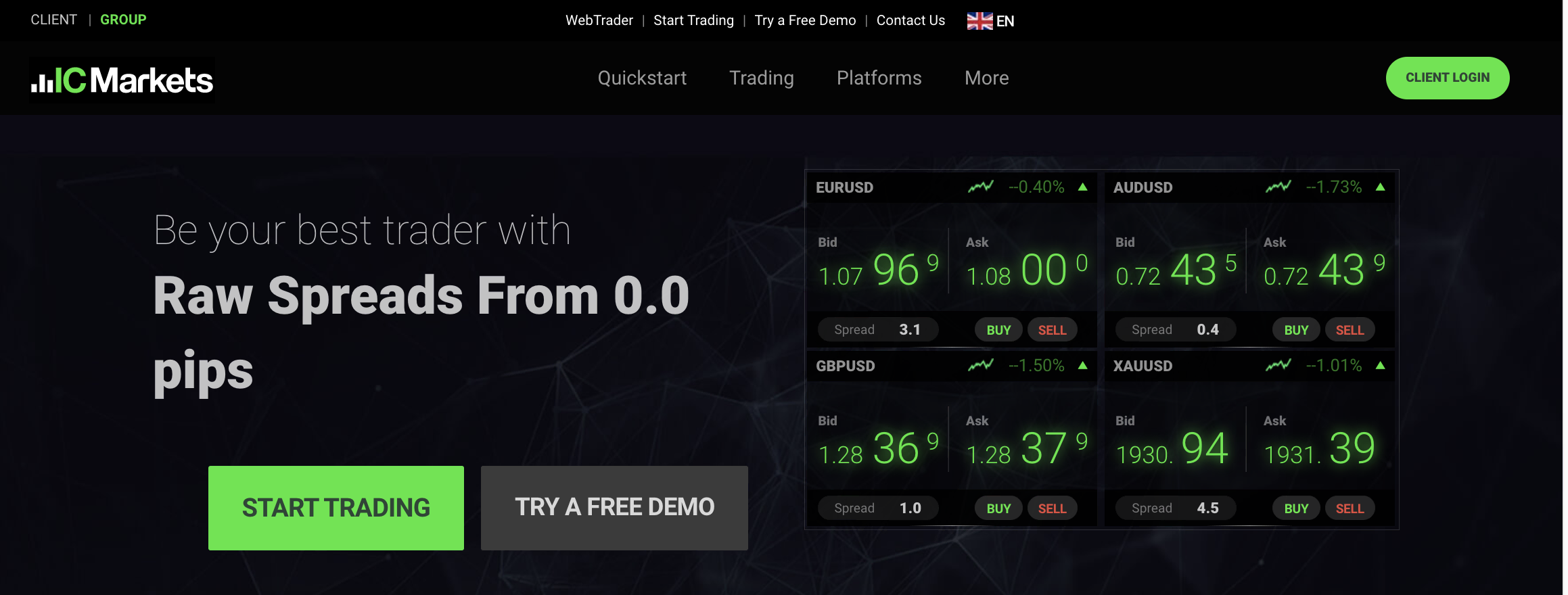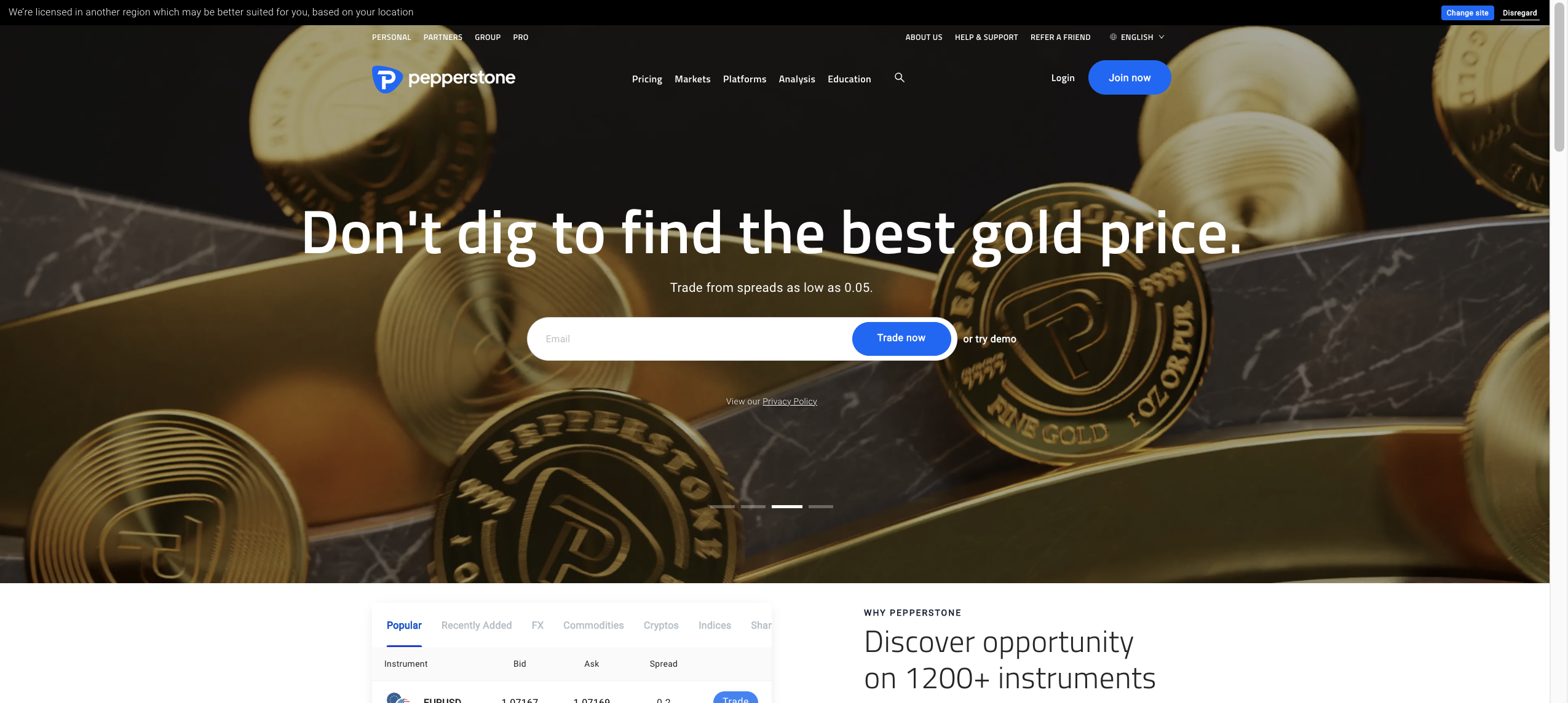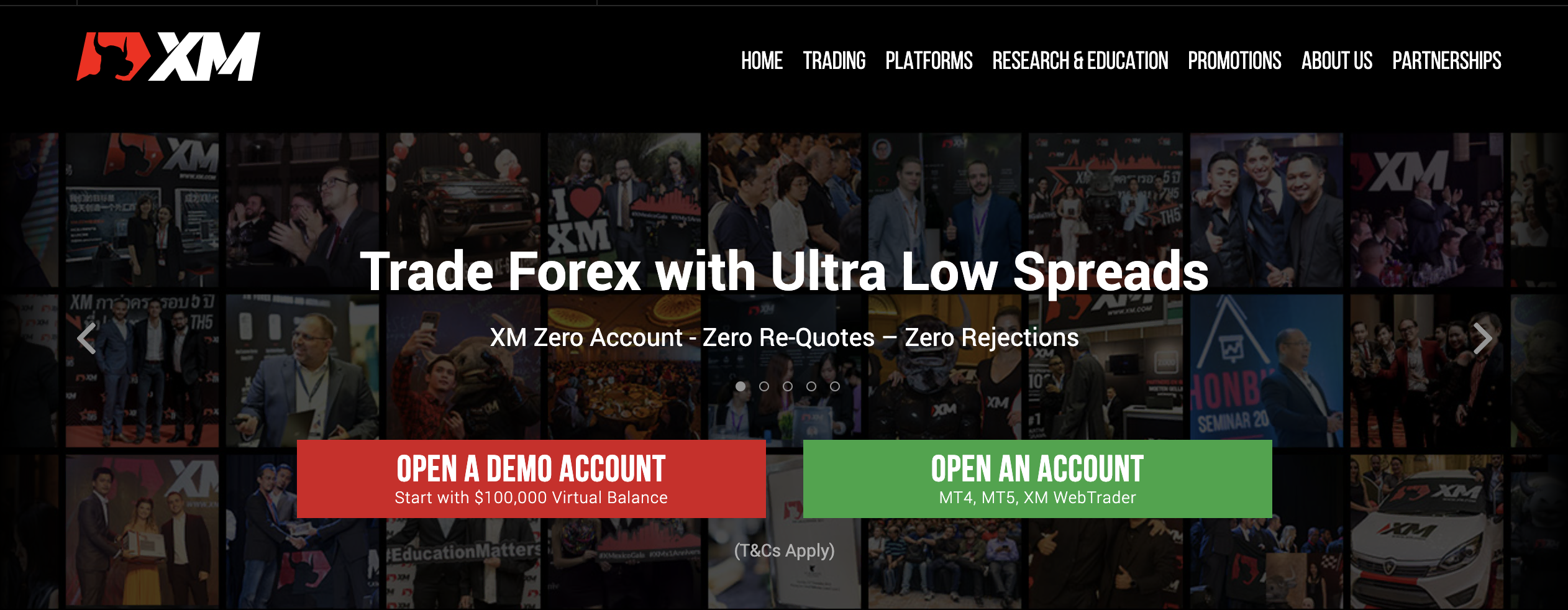5 best Forex Brokers that allow HFT (high-frequency trading): Platforms in comparison
Table of Contents
See the list of the best Forex brokers which allow HFT:
Broker: | Review: | Allows HFT: | Regulation: | Assets: | Advantages: | Open account: |
|---|---|---|---|---|---|---|
1. Vantage Markets  | Yes | CIMA, ASIC | 300+ (40+ currency pairs) | + Fast execution + MT4 & MT5 + Low trading fees + No hidden costs + Free bonus + Multi-regulated | Live account from $200(Risk warning: Your capital can be at risk) | |
2. RoboForex  | Yes | IFSC (Belize) | 9000+ (36+ currency pairs) | + Many awards + Huge diversity + Many account types + Leverage up to 1:2000 + Bonus program + Low spreads + Low commissions + 9,000+ assets | Live account from $10(Risk warning: Your capital can be at risk) | |
3. IC Markets  | Yes | ASIC, FSA, CySEC | 232+ (65+ currency pairs) | + Supports MT4 & MT5 + No hidden fees + Spreads from 0.0 pips + Multi-regulated + Fast support team + Secure forex broker | Live account from $200(Risk warning: Your capital can be at risk) | |
4. Pepperstone  | Yes | FCA, ASIC, CySEC, BaFin, DFSA, SCB, CMA | 180+ (60+ currency pairs) | + Authorized broker + Multi-regulated + 24/5 support + Low spreads + Leverage up to 1:500 | Live account from $200(Risk warning: 74-89 % of retail investor accounts lose money when trading CFDs) | |
5. XM Forex  | Yes | IFSC, CySEC, ASIC | 1,000+ (55+ currency pairs) | + Cheap trading fees + No hidden costs + Regulated and safe + International trading + 1000+ assets | Live account from $5(Risk warning: 75.59% of retail CFD accounts lose) |
Undeniably, the foreign exchange market has experienced rapid technological advancement, which has become a key driver in the way how traders operate. Three decades ago, most trades were conducted via the phone; the forex market was swarmed by institutional investors and marked with vague price information.
In recent times, technological improvements have led to new solutions that streamline the trading process, create opportunities for retail traders, lower trading costs, improve trading strategies, and provide real-time price streaming.
The introduction of algorithmic trading is one of the changes that has led to better trading strategies in the forex market. Trading processes are automated, resulting in faster executions and fewer human emotions or interventions.
While the speed and accuracy experienced with high-frequency trading give forex traders an edge, there are also inherent risks.
One of which involves choosing the ideal forex broker which allows high-frequency trading, especially one that matches your online trading requirements.
First, let’s provide a deeper insight into high-frequency trading and what it entails. Then, this step-by-step guide will help you find the best high-frequency broker for you.

What is high-frequency trading?
High-frequency trading, commonly called HFT, is an automated trading and investing method defined by a significantly large volume of transactions, rapid trade execution, order-to-trade ratios, ultra-short-term positions, and high turnover rates.
Undoubtedly, it is one of the most distinguished trading and investment strategies. It engages complex trading algorithms, powerful computers, servers, and highly advanced technology to study market data and perform high-speed trades.
High-frequency trading provides large institutional investors and top market players millisecond arbitrage opportunities to execute trades before the market opens.
The arbitrage strategy involves taking advantage of pricing inefficiencies on currencies over several markets. Once a trend is detected, thousands of trades are entered within a fraction of seconds.
High-frequency trading is mainly carried out by HFT firms, investment banks, and hedge funds which leverage inconsistencies in connection speed to get equity prices split seconds before the investing public. High-frequency trading firms and other institutions that practice HFT use automated trading platforms.
For effectiveness, high-frequency trading requires a reduced network and low latency all the way. This is where co-location services and data feeds from exchanges come into play. High-frequency trading performs better when the physical distance of HFT computers is in proximity to exchanges, reducing the time taken for data to travel between the computer and exchanges.
The high-frequency trading method is stripped of human decision-making as it takes trading actions based on a predetermined set of trading rules. Using HFT implies that large volume traders have fewer trades to supervise and spend less time controlling or monitoring trade flow.
HFT hinges its success on short-term market trends and extreme market conditions. Therefore, there is no doubt that high-frequency trading increases market competition, as traders with faster execution speed typically make more profit than traders with slow execution speed.

Pros and cons of high-frequency trading:
High-frequency trading is quite controversial as there are varying opinions regarding whether it has done more harm than good. There is also the concept that top players and large institutions generally have the upper hand in the forex market and trading.
This article will be getting into the debate by exploring some of its pros and cons.
Pros:

Some advantages of High-frequency trading include:
1. Speed
Speed is one of the terms that best define high-frequency trading. HFT transactions are executed using high-speed computers and computer software. This reduces the chances of error and data latency.
2. Improved liquidity
Liquidity provision is another way the high-frequency trading strategy profits large institutional investors. Due to a narrow bid-ask spread, high-frequency trading adds liquidity to the market and reduces trading expenses. As a result, most HFT firms are effective market makers by using the high-frequency trading strategy to increase market depth, provide liquidity and earn money from the bid-ask spread.
3. High level of accuracy
High-frequency trading requires little or no human involvement, which implies that the error is also drastically reduced. However, human traders are bound to make errors in computation or the correct study of technical indicators. This is not the case with the powerful computers used to carry out automated algorithmic trades. HFT uses complex algorithms to execute trades, and these algorithms are repeatedly checked.
Cons:

1. Increased market volatility
Volatility is an intrinsic part of trading the market and can benefit short-term traders in the forex market. However, the high-frequency trading strategy involves instant response to price fluctuations, and these rapid responses can increase the market’s volatility and expose the market to flash crashes. A flash crash is when the value of a market nosedive in a short period due to electronic and automated trading such as HFT.
2. Market manipulation
There are some strategies used in high-frequency trading that can be considered market manipulation and negatively affect long-term traders. There are several suspicious trading or trading strategies; these include painting the tape, spoofing, quote stuffing, wash trading, and others.

How does high-frequency trading work?
The high-frequency trading strategy aims to capture small profits from initiating many trades at once or millions of trades in a day. All of this is done using electronic trading resources and high-frequency financial data to leverage short market trends within seconds.
High-frequency trading strategies affect every market player regardless of whether they are HFT traders or not. However, the reason remains that HFT accounts for millions of the orders executed in the forex market and the bid-ask spread seen in the market.
HFT can be referred to as computer-driven bids, transactions, and offers that are set up to scoop small profits from the forex market. Institutional investors are the big dogs who operate HFTs. They are known for carrying out large trades. These volumes of trades have a significant impact on market prices, liquidity, and volatility.
Although large financial institutions mainly perform high-frequency trading, retail traders can maximize their understanding of HFTs to trade better.
That being said, there are two main strategies for using high-frequency trading, these include
- HFT Arbitrage Strategy and
- Scalp Arbitrage Strategy
The HFT Arbitrage Strategy uses mathematical algorithms that are fast and constant. This strategy is composed of various forms of arbitrage such as Merger Arbitrage, Index Arbitrage, Statistical Arbitrage, and Volatility Arbitrage.
The key to success in using the HFT arbitrage strategy is to take advantage of the price difference on an asset over several markets and produce the fastest algorithm for executing trades.
On the other hand, the scalp arbitrage strategy utilizes advanced mathematical techniques which analyze securities and replaces human interpretation. One of these mathematical techniques is the Monte Carlo Simulations to estimate the possible outcome through an empirical setting.
Scalped profits are typically tiny; however, because thousands of trades are opened by the computer, gains can add up to be more substantial. Large institutions and hedge funds scout for these tiny profits because they execute large numbers of trades daily.
Choosing the right software
Thanks to rapid technological advancement, high-frequency trading has gained popularity in the forex market. Essentially among large-volume traders, it opens up the opportunity for these firms to trade from anywhere at any time. They also have less number of traders to keep an eye on, affording them the time to focus on essential tasks.
As mentioned earlier, high-frequency trading automatically uses computer algorithms and various electronic trading systems to enter and exit market positions. The function of a trading algorithm is to guide buy and sell orders under a step-by-step set of instructions.
Also, algorithmic trading aims to vigorously identify profitable trading opportunities in the forex market and place trades to yield a profit at a frequency and speed that would be impossible for a human trader to match.
Since these trading actions are executed with the algorithms within a few seconds or minutes, as the case may be, high-frequency trading software has also become a requisite part of these strategies.
High-frequency trading software is programmed to find the ideal price to maximize the buying price, after which the HFT software will execute the bid at a lightning-fast speed, eliminating the need for human assistance or intervention.
As a result of the functions of this software, they are expectedly expensive to purchase; it can also be quite a challenge to develop yours. This is why algorithmic trading is prevalently dominated by large trading firms such as large investment institutions, hedge funds, and proprietary trading firms.
These firms have a generous sufficiency of resources at their disposal and can build large trading systems, committed data centers, and support staff.
Individuals also use algorithmic trading; however, these individuals are either quants or proprietary traders. The former are tech-savvy and knowledgeable in the area of computer programming and trading and have the go-ahead to build their software. The latter are not as tech-savvy and consequently may purchase ready-made software. They buy this from third-party providers or their brokers.

Choosing the right or correct software is an integral aspect of developing an algorithmic trading system. This is because faulty or wrong software can result in massive losses when trading in the forex market, regardless of the short time lag or latency.
The choice of whether to build or buy ready-made HFT software is dependent on the goal in view. Although timely and quick access is attainable from ready-made programs, creating your software from scratch gives you the opportunity and flexibility to customize it in line with your trading needs.
Buying ready-made algorithmic software can be costly, and this can take a chunk of the expected profit from your trading venture. Conversely, building one requires much time and adequate knowledge of computer programming. Either way, there will be risks and loopholes.
There are critical features needed in any algorithmic trading software, some of such include:
- Extensive Market and Company Data
- Access and Connectivity to Different Markets
- Configurability and customization
- Merged with User and Trading Interphase
- Latency
- Complete Automation
- Functionality to Write Custom Program
- Security
- Backtesting
- Autonomous Programming
Investing in the forex market can be risky, as, with any investment, it poses its challenges. This is why the place of in-depth research cannot be overemphasized.
The choice of a reliable broker is one of the determining factors of your success in the trading world. In addition, a good broker should help eliminate certain risks, especially when it comes to high-frequency trading. Therefore, it is crucial to choose an authentic broker to avoid losing your investment in the forex market.
We have compiled a comprehensive list of the best HFT-allowed forex brokers. This detailed comparison will aid your decision-making process.
List of the best forex brokers that allow high-frequency-trading (HFT):
1. Vantage Markets

Vantage FX Trading Company has been in operation for about 12 years now. It started in 2009 and has since gained popularity among traders and financial experts.
The company is regulated by Australian Security and Investment Commissions (ASIC), Vanuatu Financial Service Commission (VFSC), Cayman Island Monetary Authority (CIMA), and the UK Financial Conduct Authority (FCA) and allows high-frequency trading on the platform.
Traders must pay a minimum deposit of $200, and Vantage FX offers up to 1:500 for currency pairs. Vantage Markets provides 305 instruments in the financial market, 44 of them being currency pairs, 226 CFDs on stock, 16 indices, and 19 commodities.
Some trading terminals available on the platform are the popular MetaTrader 4, MetaTrader 5, Web Trader, and the Vantage FX Mobile App. In addition, Forex Traders are offered an initial deposit bonus, fee bonus, and bonus from the traders union.
(Risk warning: Your capital can be at risk)
2. RoboForex

Roboforex provides financial markets in about 169 countries and is used by over 10000+ forex traders. Most financial market experts also recognize it. RoboForex has a European license from Cyprus Security and Exchange Commission (CySEC) and an international license to provide Financial Service Commission Belize (FSC) services.
The minimum deposit required at RoboForex is $10. They also offer leverage of 1:2000. Some bonuses available are the welcome bonus, classic bonus, and profit share bonus. The trading terminals on the RoboForex platform include MetaTrader 4, MetaTrader 5, Mobile Apps, cTrader, Web Trader, and Mac.
RoboForex offers traders five different types of accounts: Standard Account, Micro Account, Islamic Account, VIP Account, and ECN Account. Their customer service is available 24 hours a day. In addition, they provide email and phone support. Unfortunately, RoboForex doesn’t provide LiveChat Support.
Besides PayPal and Skrill, traders can choose from four other funding and withdrawal facilities: Bank transfer, Credit Card, Neteller, and Payoneer. Traders are required to pay withdrawal fees, but not deposit fees or inactivity fees. In addition, RoboForex offers 35 forex pairs, including major and minor forex pairs.
It is important to note that losses can exceed deposits, just like IC Markets in RoboForex. There is also no negative balance protection and no guaranteed stop loss.
(Risk Warning: Your capital can be at risk)
3. IC Markets

The IC Markets is a top-rated broker and is also considered an industry leader. In addition, the brand maintains the regulatory status in two-tier 1 and one-tier 3 jurisdictions.
It is an international license from the Australian Security and Investment Commissions (ASIC), Cyprus Securities and Exchange Commissions (CySEC), and Financial Services Authority (FSA). IC Markets qualify as a safe broker, which is one reason forex traders choose them.
They give their clients easy access to the market by offering online and mobile trading platforms. The IC Markets trading platform offers over 232 instruments while offering access and connectivity to various financial markets worldwide.
In addition, IC Markets segregates clients’ funds, and the number of currency pairs offered is 65. Their platforms include MT4, MT5, Zulu Trader, cTrader, Mirror Trader, and Mac. With regards to fees, IC Markets are pretty transparent. The minimum deposit fee is 200, and their offers for forex and relatively competitive.
Traders are not required to pay withdrawal fees or inactivity fees. Some of the funding and withdrawal facilities offered by IC Markets are PayPal, Skrill, Bank Transfer, Credit Card, Neteller. It is vital that traders are aware of their brokers’ funding and withdrawal facilities to afford them a stress-free trading experience.
IC Market offers multiple customer support options, including call, email, and chat support. In addition, their customer center supports over eight languages, including English, Japanese, Dutch, Chinese, Afrikaans, German, Polish, Danish, and others.
One risk of choosing IC Markets is that the losses can exceed deposits.
(Risk Warning: Your capital can be at risk)
4. Pepperstone

Pepperstone is another broker that allows high-frequency trading. They are incorporated in the Bahamas and licensed by the Securities Commissions of the Bahamas (SCB). They also provide professional tools that help increase the efficiency of trade.
Pepperstone has an international license to provide services from the Financial Conduct Authority (FCA), Australian Security and Investment Commissions (ASIC), Cyprus Security and Exchange Commission (CySEC), Federal Financial Supervisory Authority (BaFin), Dubai Financial Service Authority (DFSA), Capital Markets Authority of Kenya.
They are used by about 89,000+ traders and offer 60 forex currency pairs, including major and minor forex currency pairs. Traders are required to pay a minimum deposit of $200, after which there is no extra charge for deposit fee, withdrawal fee, or inactivity fee.
Clients’ capital is also guaranteed as top banks hold traders’ assets in an aggregate account.
Some of the funding and withdrawal facilities offered by Pepperstone are PayPal, Skrill, Bank Transfer, Credit Card, Neteller. When it comes to customer service, they provide traders with live chat, phone support, and email support systems.
Pepperstone customer support is also available in twelve languages: English, Thai, Spanish, Chinese, Portuguese, Russian, Vietnamese, Polish, German, Arabic, French, and Italian.
One of the downsides of choosing Pepperstone as a broker is that 74-89% of retail investors lose their money when trading CFDs. There is also no negative balance protection and no guaranteed stop loss.
(Risk warning: 74-89 % of retail investor accounts lose money when trading CFDs)
5. XM

XM is known as a universal broker as it is available globally. It is regulated by Australian Security and Investment Commissions (ASIC), Cyprus Security and Exchange Commission (CySEC), and Financial Service Commission Belize (FSC).
With XM, traders must pay a minimum deposit of $5, and they offer leverage of up to 1:888, although leverage is provided according to the financial instrument being traded. The trading platforms available on XM are MetaTrader 4 and MetaTrader 5.
Some bonuses given to traders by the XM Group are promotion bonuses, bonuses from Trader’s Union, Loyalty Program bonuses, and a $30 non-deposit.
Traders are guaranteed 100% order execution, and 99% instant order delivery is also guaranteed. XM Broker also offers over 1,000 trading instruments, including 55+ currency pairs. Traders are not required to pay commission fees on withdrawal. However, they are charged for inactivity. Deposits and withdrawals through bank cards and electronic wallets are available.
Although XM Broker accepts accounts worldwide, a few countries are excluded, including the USA, New Zealand, Canada, Japan, China, and Isreal.
One of the disadvantages of choosing XM is that there is a limited choice of trading platforms, and 75.59% of retail investor accounts lose money when trading CFDs.
(Risk warning: 75.59% of retail CFD accounts lose)
Conclusion
High-frequency trading gives traders an edge in the financial market as high-frequency traders can leverage microscopic market changes and price discrepancies to make small profits over a large number of trades. Moreover, these automated trades are executed at extremely high speed and connectivity to yield desired results.
Although these advantages are present, some pitfalls have resulted in strict industry regulation to protect both top traders and retail traders.
Choosing the best HFT-allowed forex broker can be challenging, especially for beginners. There are several factors to consider. First, however, it is advisable to choose recognized and internationally regulated forex brokers to minimize risks and maximize profits.
FAQ – The most asked questions about Forex brokers which allow HFT:
What are the best high-frequency trading strategies?
There are numerous high-frequency trading strategies used by top HFT firms and large institutions worldwide. These include market-making, pair trading, HFT Scalping, Arbitrage, long and short equity, and pinging. The strategy used by a firm or proprietary trader is dependent on the outcome being projected.
How do I start high-frequency trading?
Before delving into high-frequency trading, it is essential to understand the technologies, algorithms, and complex computers used. Also, mastering high-frequency trading strategies will ensure a smooth trading experience. Any trader or firm that intends to go into HFT must choose the best high-frequency trading brokers to avoid hitches or unnecessary losses.
Is high-frequency forex lawful?
Well, these types of trades are not legal. High-frequency trading comprises event arbitrage, latency arbitrage, statistical arbitrage, and a variety of market-making. These trades are illegal and cause market movements or rapid market activity. However, most of the time, these frequency trading techniques are not fake. But they can manipulate minute variations from market stability.
How does high-frequency trading work?
High-frequency trading also referred to as HFT, is a mode of trading. It uses powerful computer programs to negotiate many orders in the blink of an eye. It has made the task very easy. Furthermore, it makes use of complex algorithms to explore multiple markets. Also, it manages orders based on market requirements. So, if you want to give a try to a high-frequency trading platform, you can go for it.
Is high-frequency forex profit-making?
Yes, traders can make a profit from high-frequency forex. The platform permits traders to benefit from even very small price fluxes. With its large volumes of securities, it makes the platform a must-try. In addition, it allows the institution to gain substantial returns on bid-ask spreads. Yet, a high-frequency trader can profit a fraction of a cent, but it also increases the possibility of a significant loss.
Last Updated on January 27, 2023 by Arkady Müller

 (5 / 5)
(5 / 5) (4.8 / 5)
(4.8 / 5)